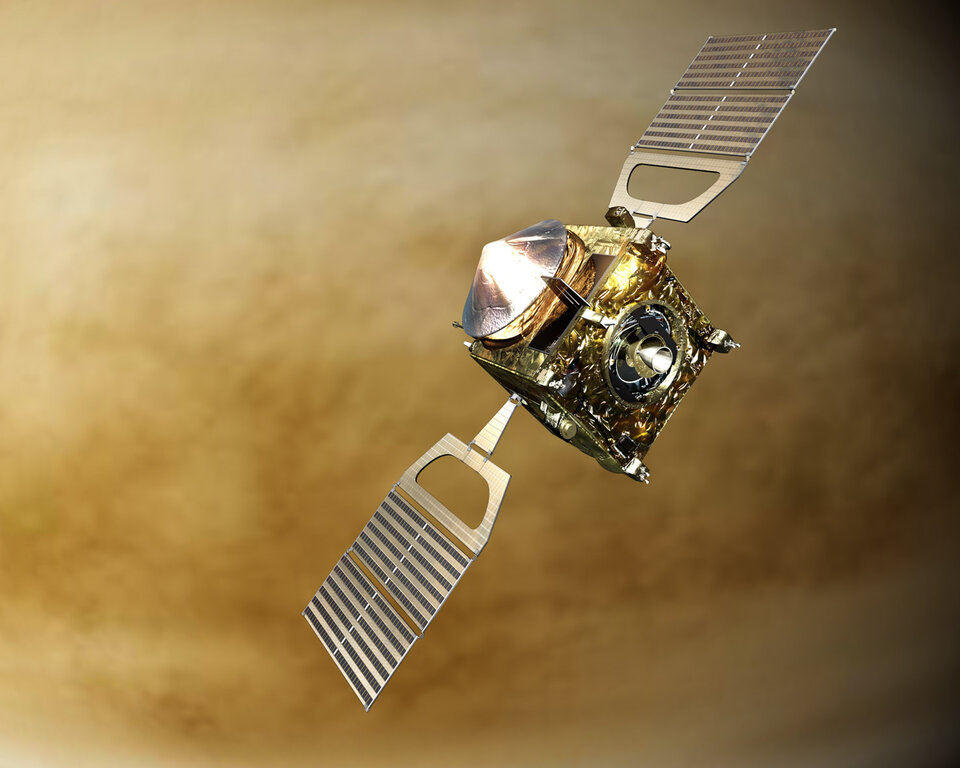European Geosciences Union kicks off week-long conference
Over 8 000 scientists from the fields of Earth and Planetary sciences have gathered in Vienna, Austria, for the third annual European Geosciences Union General Assembly, running from 3 to 7 April 2006. ESA will present recent research findings and results concerning the Earth, Venus and Mars as well as its future missions.
The assembly will cover all disciplines of the Earth and Planetary sciences – geology, geomorphology, geochemistry, geophysics, geobiology and hazards research. Over 4 000 papers and 7 000 poster sessions will be presented in 400 thematic sessions during the week.
The use of Earth observation (EO) satellites has become integral to the geosciences. And ESA’s EO satellites have given Europe a leading role in understanding the Earth’s climate, weather and environment. The Meteosat series have provided a wealth of data for the meteorology community, while the ERS remote sensing satellites and Envisat have allowed scientists to build data sets on diverse phenomena covering over 15 years.
ESA's highly ambitious space exploration missions are continually transforming our understanding of other planets. Results from the historic Huygens landing on Titan are providing fresh insights into the distant methane-rich moon of Saturn, while Mars Express continues to deliver spectacular images and precious information about the Martian surface and new information on the planet's atmosphere, climate and past water cycles.

Venus Express, launched in November 2005, will enter Venusian orbit next week on 11 April, after a 153-day cruise to the planet. The design of Venus Express is a follow on from the Mars Express spacecraft and many of its instruments belong to the heritage of the Mars Express and Rosetta platforms. ESA’s forthcoming mission Bepi-Colombo will visit Mercury, while Rosetta continues its ten-year voyage to rendezvous with Comet 67 P/Churyumov – Gerasismenko.
ESA personnel will present a number of papers during the event on subjects including preparations for the Soil Moisture and Ocean Salinity (SMOS) mission, (due for launch in 2007) which aims to advance our knowledge of the water cycle, details of the current performance of the ERS-2 and Envisat Radar Altimeters and the study of the atmosphere using Grid on-Demand, which entails using a pool of computers to faster process and interpret large amounts of EO data.
The advent of satellite radar altimetry – a tool which provides measurements of the height of the ocean surface by sending 1800 separate radar pulses down to Earth per second then recording how long their echoes take to bounce back – has provided unprecedented opportunities and capabilities for monitoring, studying and forecasting the ocean's physical environment. ESA has had radar altimeters in orbit since July 1991, when ERS-1 was launched, which was followed by ERS-2 in 1995 and Envisat in 2002.
Conference visitors can also meet ESA personnel on the exhibition stand in the main entrance hall of the Austria centre, stand number 62. The exhibits will focus on Venus Express and on the ESA Earth Explorer missions that will be launched in the coming years: in addition to SMOS, these include GOCE (2007), studying gravity and ocean circulation; ADM-Aeolus (2008) providing the first wind profile measurements from space; Cryosat-2 (2009) monitoring polar ice; the Swarm constellation (2010) surveying the Earth’s geomagnetic field and EarthCARE (2012) – a joint ESA-Japan mission for climate and weather studies.
Specialised ESA staff on the stand will explain to interested scientists how to become a user of ERS and Envisat data.




